|
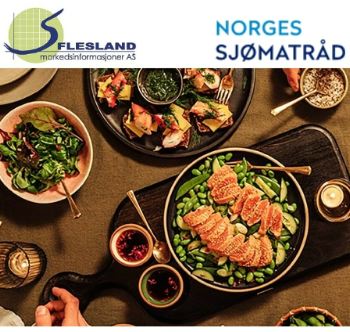
Photo: Norwegian Seafood Council/FIS
Unexpected: Rising prices and falling seafood consumption
 NORWAY
NORWAY
Wednesday, July 10, 2024, 06:50 (GMT + 9)
The price of seafood has risen, and Norwegians eat less and less fish. We have looked at purchase and sales figures from Flesland Markedsinformationer, and looked more closely at how seafood consumption has developed over the past year.
Purchasing volume of seafood is falling
The intake of fish and shellfish continues to decline. According to new figures, the total purchase volume of seafood has fallen by 1.5 percent since 2022. At the same time as the amount of seafood purchased is decreasing, the price of seafood itself has also risen considerably.
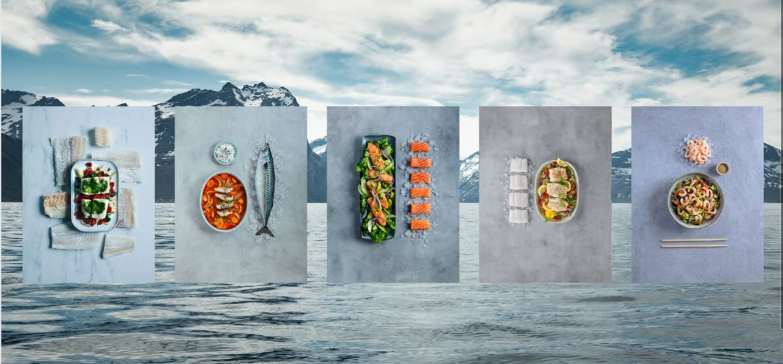
Photo: Norwegian Seafood Council
That Norwegians eat less and less seafood has already been a fact for several years - and is now getting extra help from expensive times and rising food prices.
The average price of seafood has increased
A total of NOK 12.7 billion worth of seafood was purchased for the Norwegian grocery and household goods market in 2023. This is almost 8 percent higher than in 2022, and corresponds to an average price of seafood that has increased by 9.3 percent.
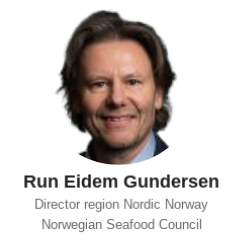 Trym Eidem Gundersen, Nordic Director of the Norwegian Seafood Council, believes it is important to remember that precisely because of such a large price increase, the figures could have been even more gloomy: Trym Eidem Gundersen, Nordic Director of the Norwegian Seafood Council, believes it is important to remember that precisely because of such a large price increase, the figures could have been even more gloomy:
"Although consumption has decreased somewhat, one could have expected a larger drop due to the price increase. Despite a year of solid price increases for several seafood categories, consumption has not fall by more than 1.5 percent. Such a large jump in price could have resulted in lower figures for purchases. This suggests that there is still considerable willingness to buy and demand for seafood. This also confirms our insight, which shows that 7 out of 10 want to eat more fish and shellfish", says Gundersen.
Price increase for fresh and frozen fish
Seafood is among the food groups that have increased in price the most in recent years. Among other things, the price of fresh fish has increased by 42 percent since 2019. Frozen fish has also increased by 30 percent. There are individual species that have increased in price even more - for example, fresh salmon fillets, which are one of the largest categories within fresh products, have increased in price by 42 percent since 2019. Frozen cod fillets have increased by as much as 45 percent.
That this affects Norwegians' seafood consumption is perhaps not surprising. In comparison, for example, fish cakes have only increased in price by 10 percent since 2019. Shellfish, on the other hand, have not gone through as large a price increase, and for frozen shellfish, the price was lower in 2023 than in 2019.
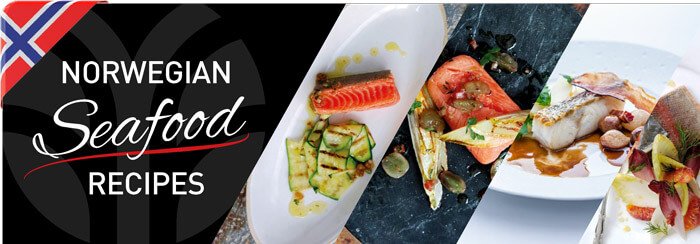
Norwegians' seafood consumption falls by 1 percent a year
The decrease in the amount of seafood bought in is therefore only the latest development in a long-term trend.
- Over the past 10 years, seafood consumption has fallen on average by 1 percent a year
- In total, consumption has decreased by 8 percent compared to 2014
- From 2022 to 2023, we can see that it has fallen by 1.5 percent
 This fall in seafood consumption corresponds to Norwegians eating 3 kg less fish per year than they did just 10 years ago. This fall in seafood consumption corresponds to Norwegians eating 3 kg less fish per year than they did just 10 years ago.
This negative trend is exactly at odds with recommendations from the health authorities regarding the consumption of seafood.
"We know that seafood is an important part of the diet, and that most Norwegians could benefit from eating more of it. The existing dietary advice from the Directorate of Health states that you should eat fish for dinner two to three times a week. And the new dietary guidelines that have now been proposed also state that fish and seafood are important sources of protein", says Gundersen.
Fresh seafood is rising in price and frozen seafood is increasing in popularity
It is perhaps not unexpected that it is fresh seafood that declines the most due to increased prices. Natural, fresh seafood is the category where the average price has increased the most, by as much as 15 per cent in a year. Therefore, we can also see that an increased preference for frozen seafood has developed, at the expense of purchasing fresh fish.
At the same time, processed fresh seafood has seen a marginal increase, and frozen processed seafood has decreased somewhat. Frozen seafood has also increased in price, but from an initially lower price point. Processed fresh products are those that have increased the least in price.
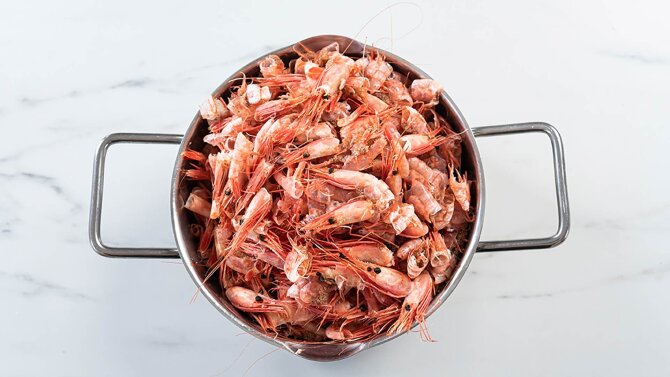
Prawns do well in the grocery sector. Photo: Norwegian Seafood Council
We mostly eat salmon, cod and shrimp
Of all seafood species, it is salmon, cod and prawns that are eaten the most. In addition, Norwegians eat a lot of seafood products with a mixed species content. Together, these four "species", including the mixed species category, account for almost 60 percent of all seafood purchased in 2023.
The fish food is mainly purchased for groceries but is also increasing within large households. Salmon and cod are in decline both within grocery and large households in 2023, while prawns are doing well in grocery.
Fish and shellfish: 19 percent of store-bought proteins
Compared to other protein sources, fish and shellfish make up a total of 19 percent of all proteins we buy in stores.
"We are not unhappy with owning 19 percent of protein sales - but it is clear that we still have a lot to do here. Based on new figures from Ipsos, we also see that particularly young Norwegians are becoming more and more concerned with proteins in particular. Seafood, which is densely packed with nutrients, therefore has great potential", notes Gundersen.
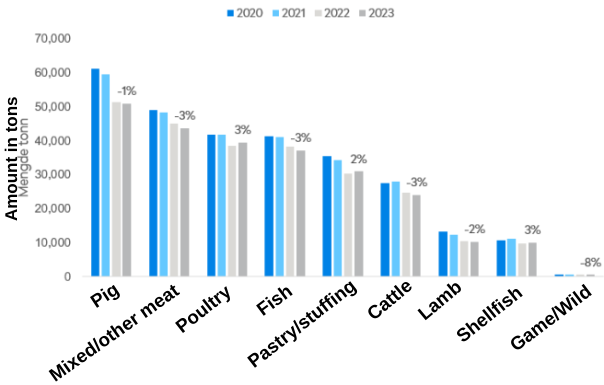
About the report
Flesland Market information uses turnover figures from wholesalers and suppliers, and in this way, we can estimate how much seafood is consumed in Norway.
These figures provide an overview of the total amount of seafood sold to shops, restaurants, and large households, measured in product weight. The data from this report says nothing about wastage, or about fish that are not eaten for various reasons. This means that the consumption figures will be lower than estimated.
Source: Norwegian Seafood Council (translated from original in Norwegian)
[email protected]
www.seafood.media
|



